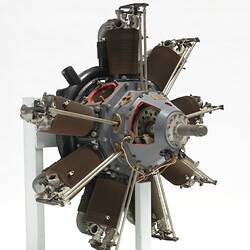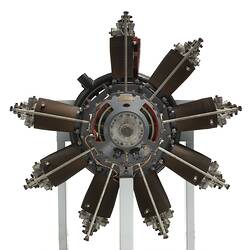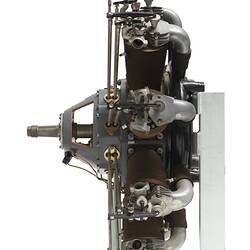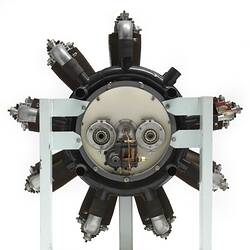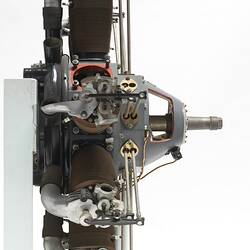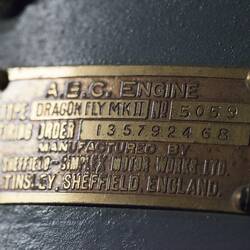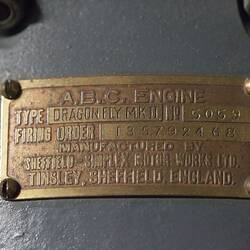Summary
ABC Motors Ltd was formed in 1912 as the All British Engine Co. Ltd by Ronald Charteris with Granville Bradshaw as the chief designer. The company produced a range of radial air-cooled aero engines which was unusual at a time when many aero engines were rotary. The firm also produced a range of small stationary engines including the Firefly flat twin-cylinder engine sometimes used in British coastal patrol blimps to power radio sets. Early aero engines produced by the company were the 45 horsepower, twin cylinder Gnat, the 6-cylinder Mosquito, the 7-cylinder Wasp. The 9-cylinder 330 horsepower Dragonfly radial engine was intended to become the standard radial engine type fitted to British service aircraft from 1918 to replace the obsolete rotary engine. Two versions were built designated the Mark 1A and the Mark 2.
The Dragonfly was produced under licence by firms such as Guy Motors Ltd in Wolverhampton, the Sheffield-Simplex Motor Works Ltd at Tinsley, Sheffield and motorcycle manufacturer Clyno Engineering also in Wolverhampton. Sheffield-Simplex carried out design and development work on the engine. A total of about 11,000 were required. The end of the war in November 1918 and the discovery that the Dragonfly suffered from serious and irrepairable design faults such as overheating and vibration, led to cancellation of British Government production orders in 1919. Dragonfly engines were advertised for commercial sale from 1919 but they were not widely used. ABC went into partnership with the aircraft manufacturer Sopwith after World War I to manufacture motorcyles but this venture folded by 1922.
The Museum's ABC Dragonfly Mark 2 engine (no. 5059) was built by the Sheffield-Simplex Motor Works Ltd in 1918 was received on loan from the Science Museum in London in 1929 and subsequently donated in 1942. It was sectioned for display purposes.
More Information
-
Collecting Areas
-
Acquisition Information
Loan & Subsequent Donation from Science Museum (London), 14 Nov 1929
-
Manufacturer
Sheffield Simplex Motor Works Ltd, Tinsley, Sheffield, Yorkshire, England, Great Britain, 1918
-
Designer
A.B.C. Motors Ltd, England, Great Britain, circa 1917
Designer & Licensor. -
Model Name or Number
-
Brand Names
-
Classification
Air transport, Aero engines, Reciprocating propeller engines
-
Category
-
Discipline
-
Type of item
-
Keywords
Aero Engines, Internal Combustion Engines, World War I, 1914-1918

